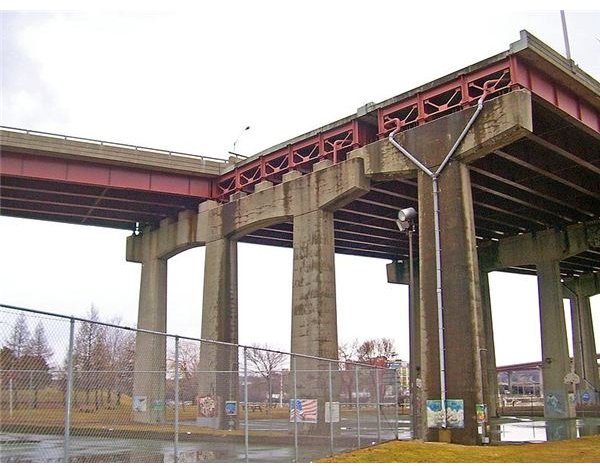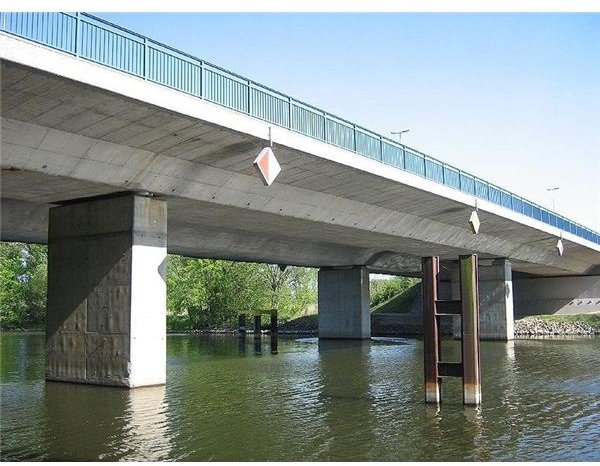What Is a Beam Bridge - Advantages & Disadvantages - Beam Bridge Types
Beam Bridge Basics
Beam bridges are a common type of bridge among the truss bridges and the arch bridges. Wide flange rolled
form beam bridges are normally the most cost-effective type of beam construction that is used for beam bridges with short spans. The beams generally are located at fixed gaps by using construction cranes, parallel to the traffic direction, between abutments or piers. A concrete deck is placed on the main flange to provide lateral assistance against buckling. Bridge deck forms are constructed according to the traffic load and other design characteristics. Diaphragms are fixed between the beams to provide additional reinforcement, and also facilitate lateral distribution of loads to the bridge beams.
image credit: wikimedia.org/Botaurus
Kinds Of Beam
Normally, the deck of a beam bridge is made of reinforced concrete or metal. Cross

bracing is usually used between the bridge beams to increase the load bearing capacity of the beams. Another technique of increasing the beam load capacity, with use of minimum web depth, is by the addition of haunches, located at the supported ends. Generally, the middle section has is a customary form with a parallel flange. The angled or curved flanged ends are bolted, or riveted, by the use of joining plates. Since transportation of heavy and long beams to the bridge site is difficult, short convenient beam lengths are normally connected on site by using splice plates.
image credit: wikimedia.org/Daniel Case
Advantages & Disadvantages of a Beam Bridge
Beam Bridge Advantages
- Beam bridges are helpful for short spans.
- Long distances are normally covered by placing the beams on piers.
Beam Bridge Disadvantages
- Beam bridges may be costly even for rather short spans, since expensive steel is required as a construction material. Concrete is also used as beam material, and is cheaper. However, concrete is comparatively not that strong to withstand the high tensile forces acting on the beams. Therefore, the concrete beams are normally reinforced by using steel mesh.
- When long spans are required to be covered, beam bridges are extremely expensive due to the piers required for holding the long beams. Building of the support piers may not always be possible due to the limitation of space.
- Bridge beams are likely to droop between the piers, due to the different bridge loads acting downwards. The forces acting upwards at the pier supports also influence the drooping effect. The sagging tendency is increased when the bridge span or load is increased.
Modern Beam Bridges
The sections of the current steel beam bridges are generally fabricated at appropriate locations, and then transported to the bridge construction site. Welding of the bridge elements is performed at the construction site. Subsequently, the sections are fixed with the supports. The shape of the boxes is designed to be trapezoid since this configuration facilitates passing of the wind, without damaging the bridge structure. The maintenance of a steel beam bridge is extremely expensive. Concrete beam bridges being more economical, are therefore commonly used. The concrete beam is simple, and does not need a great deal of maintenance. Concrete beams include adequate steel for their reinforcement.
References
PBS, Beam Bridge
Tongji University, Beam Bridges
Purdue University, Bridge Construction
